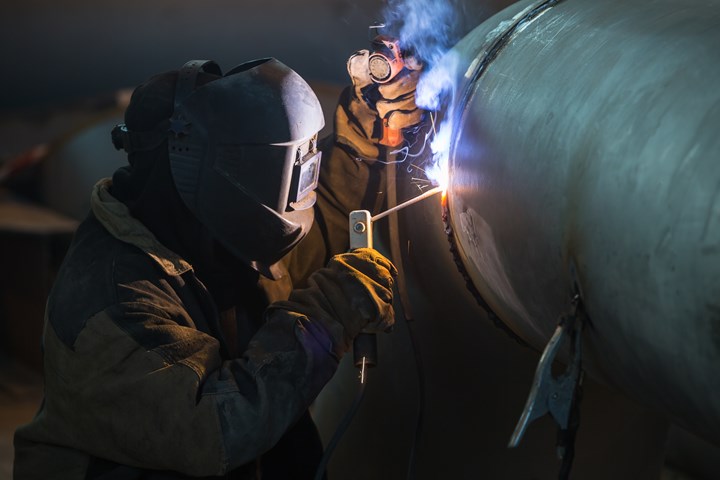Why a Welding WPS is Crucial: Enhancing Consistency and Compliance
Wiki Article
Achieving Welding Excellence: Unveiling the Keys of WPS Execution and Optimization
In the world of welding, accomplishing excellence is a search that hinges on the careful implementation and optimization of Welding Procedure Requirements (WPS) By delving right into the crucial elements, techniques, challenges, and finest methods linked with WPS, a globe of welding quality waits for those that are eager to discover its midsts.Relevance of WPS in Welding
The Relevance of Welding Procedure Specs (WPS) in the welding sector can not be overemphasized, working as the foundation for making sure uniformity, high quality, and security in welding operations. A WPS supplies detailed directions on how welding is to be accomplished, including essential variables such as products, welding procedures, joint layout, filler metals, interpass and preheat temperatures, welding currents, voltages, travel rates, and more. By sticking to a distinct WPS, welders can keep harmony in their job, resulting in consistent weld high quality across various projects.
Key Components of WPS
Discussing the important parts of a welding treatment spec (WPS) is essential for understanding its function in welding procedures. A thorough WPS includes numerous crucial elements that lead welders in accomplishing high quality and uniformity in their work. One vital aspect of a WPS is the welding procedure spec, which details the specific welding processes to be used, such as gas tungsten arc welding (GTAW) or protected steel arc welding (SMAW) In addition, the WPS includes details on the welding materials, such as the type and requirements of the base steel and filler steel to be made use of. The WPS additionally specifies essential variables like welding specifications, preheat and interpass temperature needs, and post-weld warm treatment procedures. Furthermore, it consists of information on joint layout, fit-up, and any unique methods or precautions essential for the welding procedure. By including these vital elements right into the WPS, welding procedures can be standardized, making certain high quality, efficiency, and safety in welding operations.Approaches for WPS Optimization

Second of all, training and credentials of welding employees according to the specific needs of the WPS is critical. Giving extensive training programs and making certain that welders are certified to implement treatments detailed in the WPS can lead to greater high quality welds and lowered rework.
Additionally, leveraging innovation such as welding software application and tracking systems can assist in enhancing WPS. These tools can assist in tracking variables, guaranteeing parameters are within specified limitations, and offering real-time feedback to welders, enabling them to make prompt adjustments for improved weld high quality.
Usual Obstacles and Solutions
Encountering barriers in implementing the methods for WPS optimization can prevent welding operations' efficiency and high quality. One common difficulty is inadequate training or understanding of the welding treatment requirements (WPS) amongst the welding group.Another difficulty is the absence of proper documents and record-keeping, which is necessary for WPS optimization. Without clear documents of welding parameters, materials used, and assessment results, it becomes tough to recognize locations for renovation and ensure uniformity in welding processes. Executing a durable documents system, such as digital welding management software application, can aid improve record-keeping and facilitate data evaluation for continuous improvement.
Additionally, irregular welding devices calibration and maintenance can posture a considerable obstacle to WPS optimization. Routine devices checks, calibration, and maintenance routines should be followed strictly to ensure that welding criteria are properly managed and preserved within the defined resistances (welding WPS). By resolving these typical obstacles with positive solutions, welding procedures can improve effectiveness, high quality, and general welding quality
Ideal Practices for WPS Implementation
To ensure effective WPS application in welding operations, adherence to sector criteria and precise attention to detail are critical. When starting WPS execution, it is important to start by extensively recognizing the specific welding demands of the job. This entails a comprehensive evaluation of the welding treatment requirements, products to be bonded, and the environmental conditions in which the welding will happen.Once the demands are clear, the next action is to choose the suitable welding procedure that straightens with these specs. This involves seeking advice from the appropriate codes and criteria, such as those supplied by the American Welding Culture (AWS) or the International Organization for Standardization (ISO), to make certain conformity and top quality.
Furthermore, documenting the entire WPS implementation procedure try these out is essential for traceability and quality assurance. Comprehensive records should be maintained pertaining to welding criteria, material prep work, preheat and interpass temperature levels, welding consumables used, and any inconsistencies from the initial treatment. Routine audits and reviews of the WPS can help recognize locations for improvement and make certain ongoing optimization of the welding process.


Final Thought
In final thought, the execution and optimization of Welding Procedure Requirements (WPS) is vital for attaining welding excellence. By recognizing the essential components of WPS, carrying out effective methods for optimization, attending to usual challenges, and complying with ideal Home Page techniques, welders can guarantee top notch welds and secure working conditions. It is critical for experts in the welding industry to focus link on the appropriate implementation of WPS to boost general welding efficiency and attain desired end results.
The Significance of Welding Treatment Specifications (WPS) in the welding sector can not be overstated, offering as the backbone for ensuring uniformity, top quality, and safety and security in welding operations. A WPS gives thorough directions on just how welding is to be carried out, including important variables such as products, welding processes, joint style, filler steels, interpass and preheat temperature levels, welding currents, voltages, traveling rates, and much more. One critical element of a WPS is the welding procedure spec, which outlines the specific welding processes to be used, such as gas tungsten arc welding (GTAW) or secured metal arc welding (SMAW) By including these crucial components into the WPS, welding treatments can be standard, guaranteeing top quality, performance, and safety in welding operations.
It is necessary for professionals in the welding industry to prioritize the proper execution of WPS to enhance total welding efficiency and achieve preferred results.
Report this wiki page